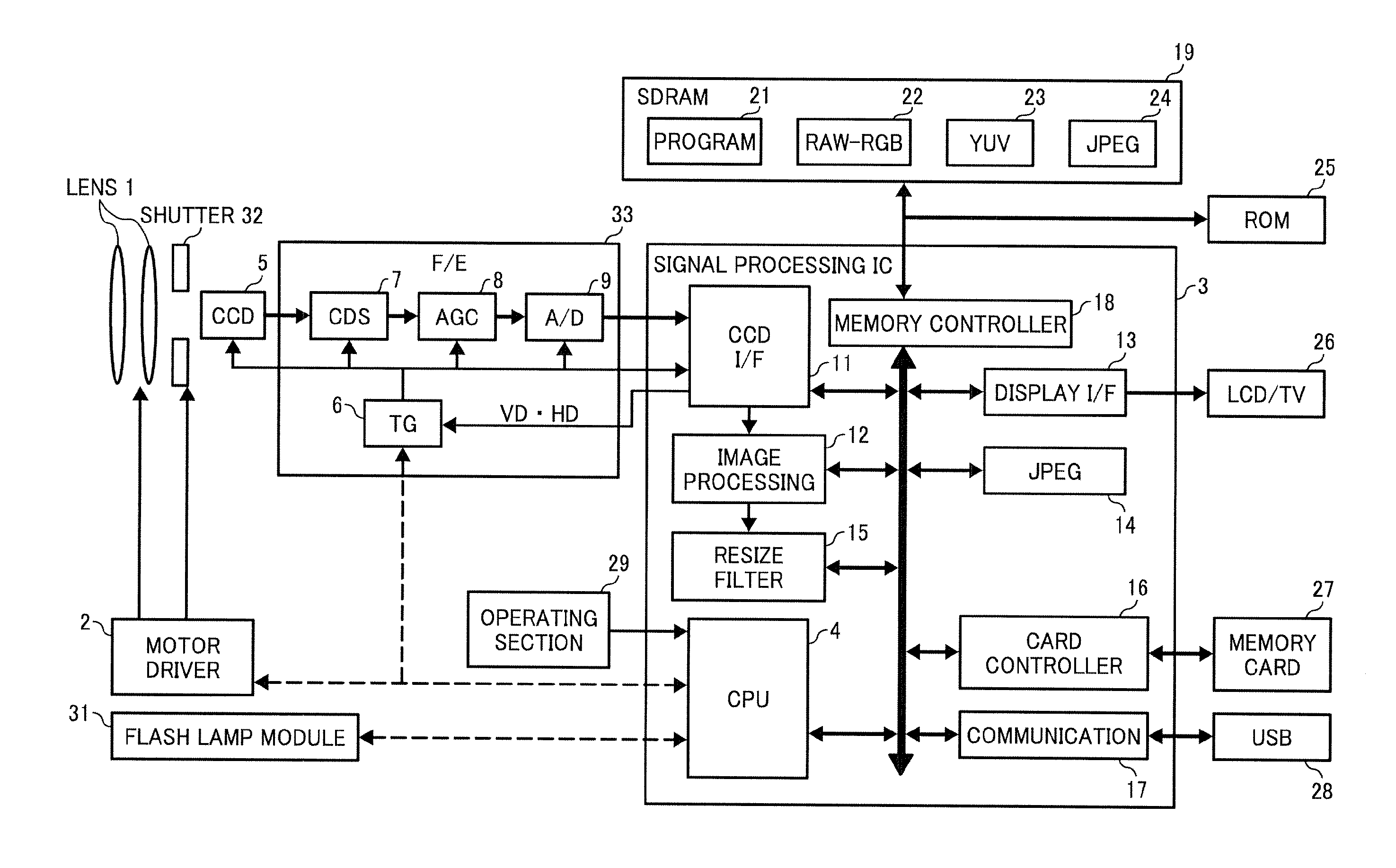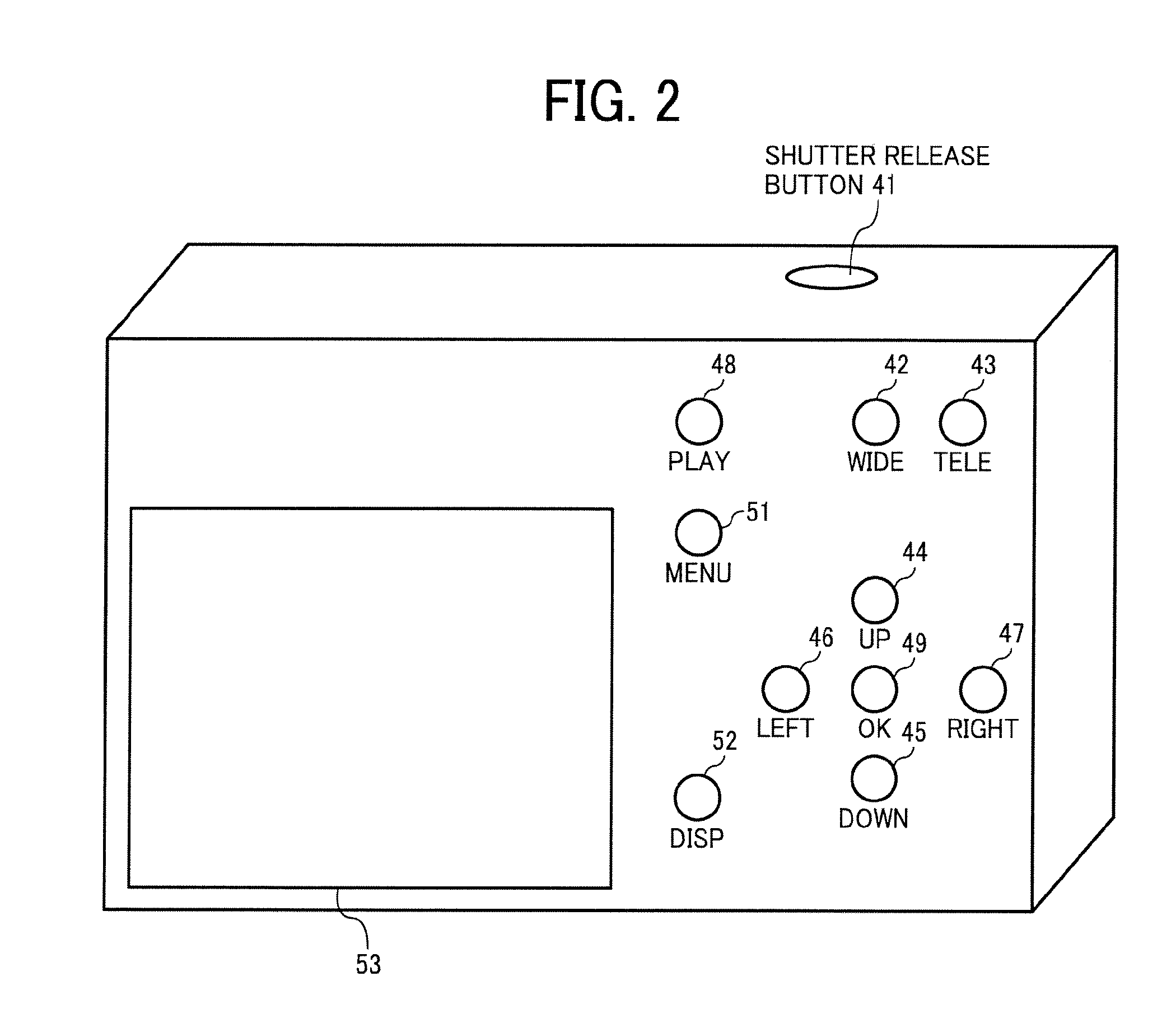Image processor, digital camera, and method for processing image data
a technology of image data and image processor, applied in the field of image processor and digital camera, can solve the problem of inability of digital cameras to confirm whether the detailed portions of displayed images subjected to blurring processing have the desired image quality
- Summary
- Abstract
- Description
- Claims
- Application Information
AI Technical Summary
Benefits of technology
Problems solved by technology
Method used
Image
Examples
example 1
[0051]Example 1 of the image processor and digital camera of the present invention will be explained by reference to drawings. FIGS. 3 to 6 are flowcharts for explaining out-of-focus background processing and display of the image having out-of-focus background.
[0052]At first, out-of-focus background processing and display of an image having out-of-focus background in a reproduction mode will be explained. The flow of the processing of from start of reproduction mode to end of the reproduction mode is illustrated in FIG. 3. By pushing the PLAY button 48, the operator can observe the recorded images. In this regard, the status attained by pushing the PLAY button 48 is called reproduction mode. When the reproduction mode is attained, image files, which can be reproduced, are displayed in the displaying device 53. Among the image files, the operator selects an image file to be subjected to an out-of-focus background processing. When the operator pushes the RIGHT button 47, the next imag...
example 2
[0078]In Example 1, a boundary region between the object region and the background region, which has high frequency components, is displayed so that the operator can confirm the effect of the blurring processing. However, it is possible that a portion of the background region, which is suitable for evaluating the effect of the blurring processing, as well as the boundary region, is displayed.
[0079]Specifically, in Example 2, a region including high frequency components in a largest amount is also selected from the entire image to be displayed in the screen so that the operator can well confirm the effect of the blurring processing. Example 2 is the same as Example 1 except that the method for determining the region to be displayed is different.
example 3
[0080]If the image does not have a boundary region to be displayed, which has high frequency components, in Example 1, the following method for determining the region to be displayed is used in Example 3. In this case, a portion of the background region including high frequency components most is displayed in the screen. When-determining the region to be displayed, portions closer to the object region are evaluated faster to determine a portion suitable as the region to be displayed. The evaluation is performed until a portion suitable as the region to be displayed is found.
[0081]Example 3 is the same as Example 1 except that the method for determining the region to be displayed is different.
[0082]As mentioned above, the image subjected to a blurring (out-of-focus) processing is displayed while enlarged in the digital cameral of the present invention, and therefore the effect of the blurring processing can be recognized better than in conventional digital cameras in which only a red...
PUM
 Login to View More
Login to View More Abstract
Description
Claims
Application Information
 Login to View More
Login to View More - R&D
- Intellectual Property
- Life Sciences
- Materials
- Tech Scout
- Unparalleled Data Quality
- Higher Quality Content
- 60% Fewer Hallucinations
Browse by: Latest US Patents, China's latest patents, Technical Efficacy Thesaurus, Application Domain, Technology Topic, Popular Technical Reports.
© 2025 PatSnap. All rights reserved.Legal|Privacy policy|Modern Slavery Act Transparency Statement|Sitemap|About US| Contact US: help@patsnap.com



